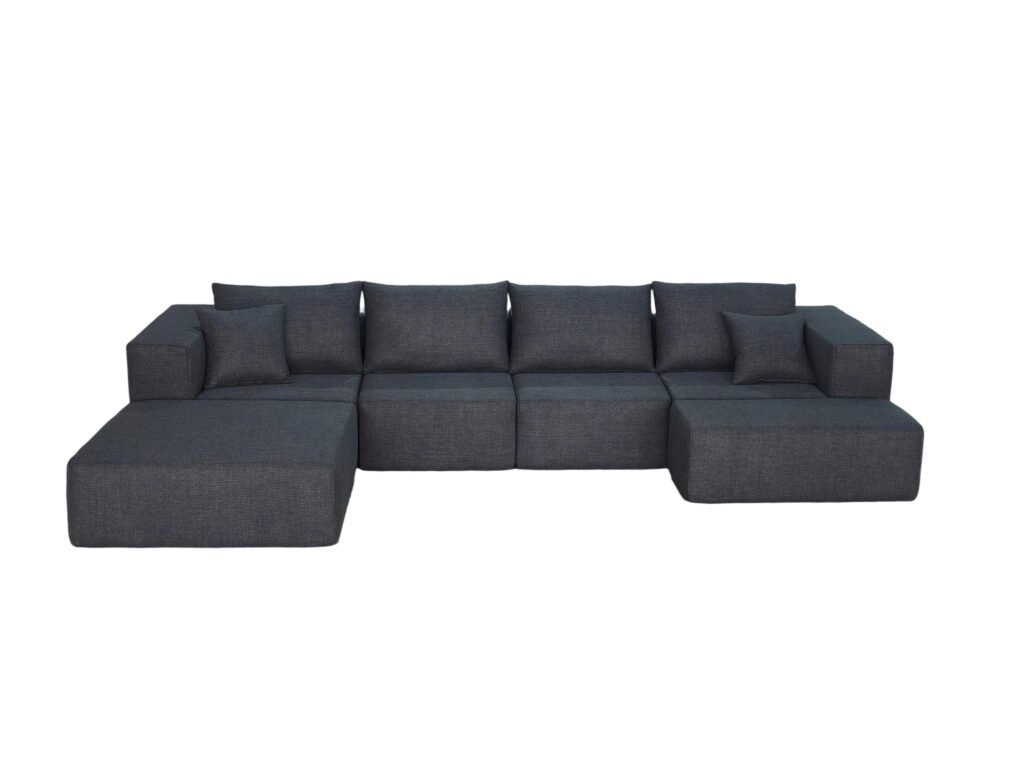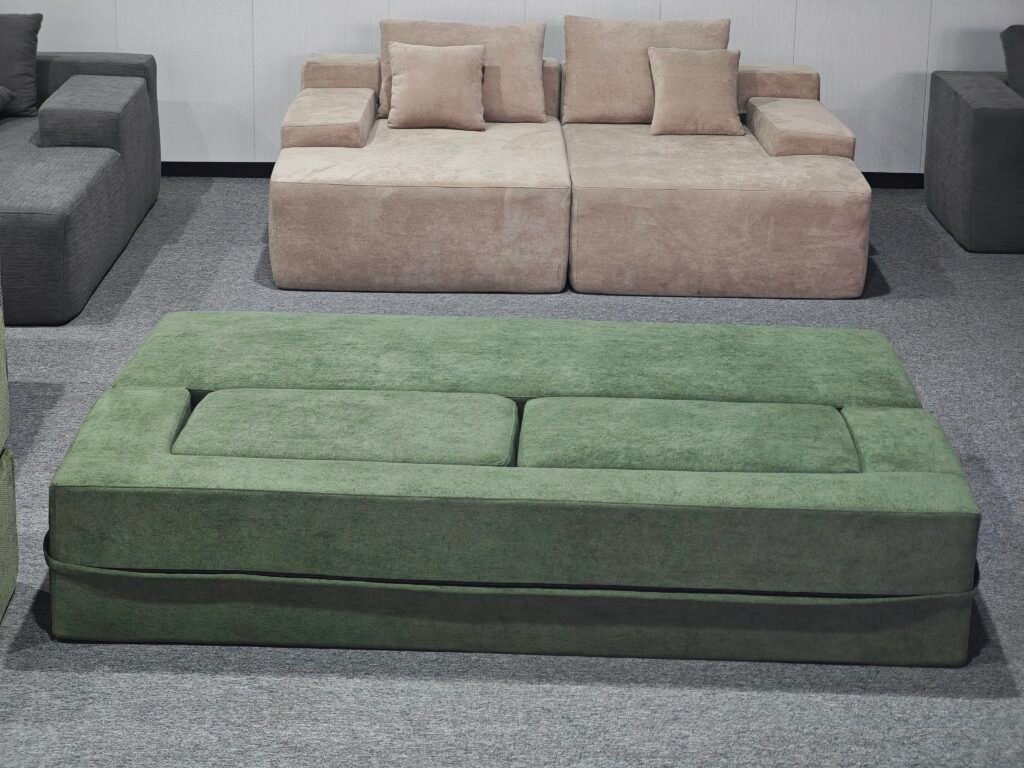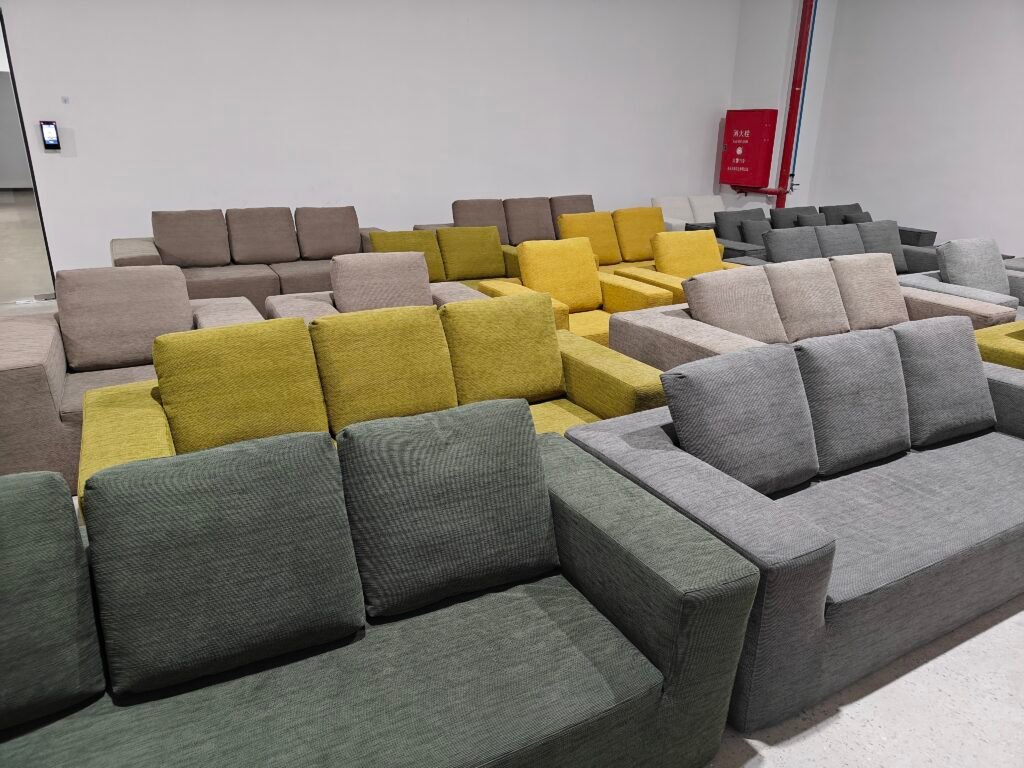Compressed sofas, also known as vacuum-packed sofas or modular sofas, represent a breakthrough in modern furniture manufacturing. With the increasing demand for flexible living solutions and the trend towards smaller living spaces, compressed sofas have gained popularity due to their portability, easy assembly, and comfort. Every detail — from materials to structure — reflects the advances in technology and thoughtful design. By understanding the core materials and structural elements of compressed sofas, consumers can appreciate the strengths and versatility of these modern pieces of furniture.
The defining feature of a compressed sofa lies in its vacuum packaging technology, which allows the sofa or its modular components to be compressed into a compact box. This significantly reduces shipping costs and eases handling for customers. Unlike traditional bulky sofas delivered fully assembled, compressed sofas arrive in compressed forms and expand to their full size within hours without requiring tools. Thanks to high-resilience materials and modular design, compressed sofas are practical, stylish, and customizable.


The Principle of Compression Technology
The core innovation behind compressed sofas is the use of advanced compression materials and packaging techniques. Air is extracted during vacuum sealing, drastically reducing the product volume for efficient transportation. The key to this technology is the use of high-density foams or memory foam materials that offer excellent rebound characteristics — they quickly recover their original shape after compression. The structural design ensures that the sofa remains lightweight yet sturdy, enabling compression and expansion processes without material damage. This technology overcomes traditional furniture shipping challenges and provides unprecedented flexibility in home layout and space utilization.
Core Materials Explored
The core materials that make up compressed sofas include high-density foams, framework materials, upholstery fabrics, and supplementary padding. Each material plays an important role in delivering durability, comfort, and aesthetic appeal.
High-Density Foam
High-density foam forms the bulk of the sofa seat cushions and backrests. Known for excellent elasticity and shape retention, it maintains its form after long hours of use. Types of foam commonly used include traditional polyurethane foam, memory foam (viscoelastic foam), and high-rebound sponge foam. Memory foam molds gently to the body’s contours, easing pressure points and increasing comfort, while high-rebound foam quickly bounces back, preventing sagging and deformation. Such foams ensure that compressed sofas withstand repeated compression and shipping without losing support or comfort.
Framework Materials
While some compressed sofas abandon rigid frames in favor of an all-foam structure, many models use lightweight metal frameworks or engineered wood to provide additional stability. Metals such as steel or aluminum offer strength and corrosion resistance while keeping the overall weight low. Engineered wood, processed for strength and durability, is also a common choice. Frameworks are carefully designed to be modular, allowing quick assembly and disassembly. Using lightweight materials makes the sofa easier to move and helps minimize shipping costs while ensuring long-term structural integrity.
Upholstery Fabrics
Fabric choices not only impact the sofa’s style but also its usability and longevity. Compressed sofas often feature durable synthetic fabrics such as polyester, microfiber, velvet, or chenille. These materials are chosen for their wear resistance, stain repellency, and ease of cleaning — essential qualities for households with children or pets. Velvet and snowflake velvet offer a luxurious, soft, and breathable texture, enhancing overall comfort. Fabric selection also takes into account colorfastness and environmental standards to ensure a balance between beauty, durability, and eco-friendliness.
Supplementary Padding
Beyond the core foam, compressed sofas frequently include layers of soft padding such as cotton or silk wool. These materials add softness and improve breathability, providing a more pleasant temperature regulation and a luxurious feel. Natural fiber padding contributes to airflow within the cushions, keeping the sofa comfortable in both warm and cool climates. These layers are thin enough not to hamper compression but add significant comfort during use.


Modular Structure and Design
A standout feature of compressed sofas is their modular design. Instead of a single bulky piece, sofas are separated into multiple modules — typically including seat cushions, backrests, armrests, and occasionally ottomans. Each module is compressed individually, allowing for more efficient packing and easier transport. Consumers can then connect these modules using hidden fasteners such as zippers, Velcro strips, or clips, facilitating quick and flexible assembly. This modularity permits users to customize the sofa layout to their living space and preferences.
Modular design also benefits manufacturers by enabling standardized production, easy replacement of worn parts, and improved inventory management. If a module becomes damaged, only that part needs replacement. Users can expand or contract the sofa by adding or removing modules according to changing needs, supporting a personalized and adaptable furniture experience.
Comparison with Traditional Sofas
Compressed sofas differ significantly from traditional sofas in terms of materials, construction, and functionality. Traditional sofas usually feature heavy hardwood or metal frames, springs or natural fillings such as down and cotton, and a variety of upholstery materials ranging from leather to natural fibers. They often require professional assembly and pose challenges with delivery and moving due to their bulk and weight.
On the other hand, compressed sofas emphasize portability and ease of use. Thanks to their lightweight foam cores and modular setup, they can be compressed into small packages and shipped affordably. Foam cores are engineered for durability and resistance to sagging or deformation, whereas traditional sofas may lose plushness over time due to their natural fillings. The synthetic upholstery fabrics used in compressed sofas offer superior stain resistance, making them more suited to active households or pet owners.
| Aspect | Compressed Sofa | Traditional Sofa |
|---|---|---|
| Frame Material | Lightweight metal, engineered wood, or no frame | Solid hardwood or heavy metal |
| Padding & Cushioning | High-density foam, memory foam, high-rebound sponge | Feather, cotton, springs, down |
| Upholstery | Synthetic fabrics (polyester, velvet, microfiber, chenille) | Leather, natural fibers (cotton, linen, wool) |
| Weight | Light to medium | Heavy |
| Portability | Very high; compact packaging and easy transport | Bulky and difficult to move |
| Customization | Modular, reconfigurable | Fixed, limited customization |
| Assembly | Tool-free, quick expansion | Often pre-assembled or requires complex setup |
| Durability | Resistant to deformation, stable shape retention | Plush but prone to sagging and shape changes |
Detailed Material Properties and Benefits
| Component | Typical Material(s) | Function | Features and Benefits |
|---|---|---|---|
| Frame | Metal (steel/aluminum), engineered wood, or none | Structural support, modular connection | Lightweight, strong, corrosion-resistant, modular |
| Cushion Core | High-density foam, memory foam, high-rebound sponge | Comfort, body support, shape retention | High resilience, quick rebound, long-lasting comfort |
| Padding Layer | Cotton, silk wool | Additional softness, insulation, breathability | Soft, breathable, temperature regulation |
| Upholstery Fabrics | Polyester, microfiber, velvet, chenille | Aesthetic cover, tactile feel, wear resistance | Durable, stain-resistant, easy to clean |
| Connectors | Zippers, Velcro, hooks | Assembly and secure connections of modules | Invisible integration, flexibility, easy to attach/detach |
Manufacturing Process of Compressed Sofas
The production of a premium compressed sofa involves multiple precise steps to ensure quality and performance. The entire process begins with selecting high-quality materials based on elasticity, durability, and eco-credentials. Foam blocks are shaped and cut using CNC machines or templates to ensure exact dimensions and consistent density profiles. Upholstery fabrics are cut and sewn with attention to seam durability and appearance.
After the foam core and fabric covering are assembled, additional padding layers are added carefully to maintain softness and breathability. Each module is then vacuum-compressed via automated machines, which extract air and seal the product in shrink-wrap and heavy-duty packaging designed to protect during transport and handling. Finally, modules are boxed with assembly instructions and necessary connectors, ensuring the consumer experiences smooth and tool-free setup.
Upon delivery, users unpack the compressed boxes and allow the sofa modules to decompress and expand naturally over several hours. The modules are then connected using the provided fasteners to complete the sofa assembly. This straightforward process eliminates the need for specialized assembly tools or technicians, making it highly user-friendly.


Why Choose a Compressed Sofa?
Consumers opting for compressed sofas often prioritize convenience, modern aesthetics, cost efficiency, and environmental considerations. These sofas offer excellent space-saving benefits, ideal for apartments, dorms, or offices where maximizing usable space is key. With easy "unbox and expand" setup, they reduce installation time and related costs. The materials used are engineered for durability, reducing the frequency of replacement and thus the overall environmental impact.
Additionally, many manufacturers now incorporate eco-consciousness by using recycled foams, sustainable upholstery fabrics, and biodegradable packaging materials. The lower shipping volume and lighter weight also contribute to reducing carbon emissions in logistics. For busy, fast-paced lifestyles, compressed sofas provide an excellent balance of style, comfort, and practicality.
Emerging Trends and Future Directions
The furniture industry is rapidly evolving with trends toward sustainability, smarter design, and enhanced user experience. Future compressed sofas will increasingly use bio-based foams and plant-derived fabrics that maintain performance while reducing ecological footprints. Innovations in dyeing processes will enable vibrant colors without toxic chemicals. Smart sofas embedded with sensors could automatically adjust firmness or temperature to maximize individual comfort.
Modularity will become even more refined, with interchangeable parts designed for multi-functionality — for example, integrating storage modules or tech-enabled surfaces. Advanced manufacturing techniques such as 3D foam printing and robotic sewing promise better quality control and faster customization. Overall, the compressed sofa segment is poised to become a leader in green, adaptive, and user-centric home furnishings.
Summary
At their core, compressed sofas rely on an advanced blend of high-density resilient foam, lightweight yet sturdy framework materials, versatile upholstery fabrics, and considerate modular design. This synergy creates furniture that revolutionizes shipping logistics, simplifies assembly, and supports a comfortable, modern lifestyle. Compared with traditional sofas, compressed sofas provide unmatched portability, customization possibilities, and often a better fit for space-conscious, on-the-go consumers.
Understanding these foundational materials and construction principles empowers buyers to make informed choices, ensuring they select compressed sofas that deliver quality, comfort, and longevity. Trusted manufacturers like modular-sofas.com exemplify these innovations by providing stylish, durable modular sofas designed for contemporary living.